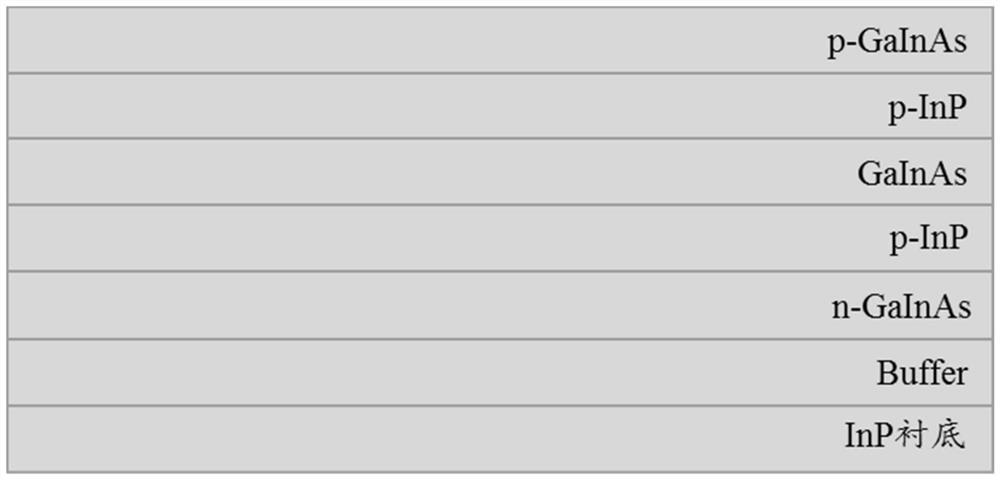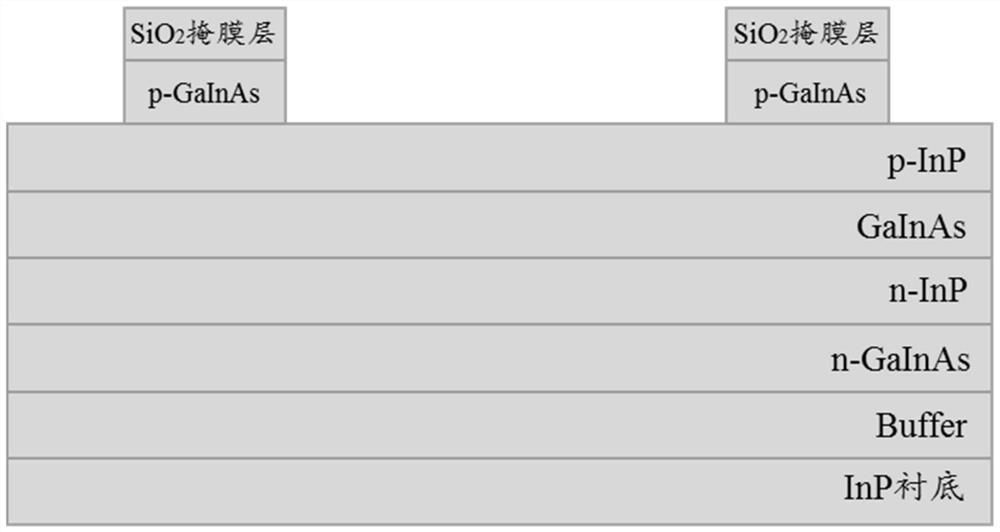Flexible planar detector PIN chip and manufacturing method and application thereof
A detector and planar technology, applied in the field of photodetectors, can solve problems such as inapplicable flexible devices
- Summary
- Abstract
- Description
- Claims
- Application Information
AI Technical Summary
Problems solved by technology
Method used
Image
Examples
Embodiment Construction
[0076] In order to describe the technical content, achieved goals and effects of the present invention in detail, the following descriptions will be made in conjunction with the embodiments and accompanying drawings. The test methods used in the examples are conventional methods unless otherwise specified; the used materials, reagents, etc., are commercially available reagents and materials unless otherwise specified.
[0077] Embodiments of the present invention are: a flexible planar detector PIN chip and a preparation method thereof, comprising the following steps:
[0078] S1. Grow a Buffer layer (InP) on the surface of the InP substrate, and grow the following layers sequentially upward from the Buffer layer by MOCVD method: n-type InGaAs ohmic contact layer, n-type InP layer, InGaAs layer, p-type InP layer and p-type InGaAs ohmic contact layer, fabricated as figure 1 A prefab A as shown;
[0079] S2. Deposit SiO on the surface of the p-type InGaAs ohmic contact layer o...
PUM
 Login to View More
Login to View More Abstract
Description
Claims
Application Information
 Login to View More
Login to View More - R&D
- Intellectual Property
- Life Sciences
- Materials
- Tech Scout
- Unparalleled Data Quality
- Higher Quality Content
- 60% Fewer Hallucinations
Browse by: Latest US Patents, China's latest patents, Technical Efficacy Thesaurus, Application Domain, Technology Topic, Popular Technical Reports.
© 2025 PatSnap. All rights reserved.Legal|Privacy policy|Modern Slavery Act Transparency Statement|Sitemap|About US| Contact US: help@patsnap.com



